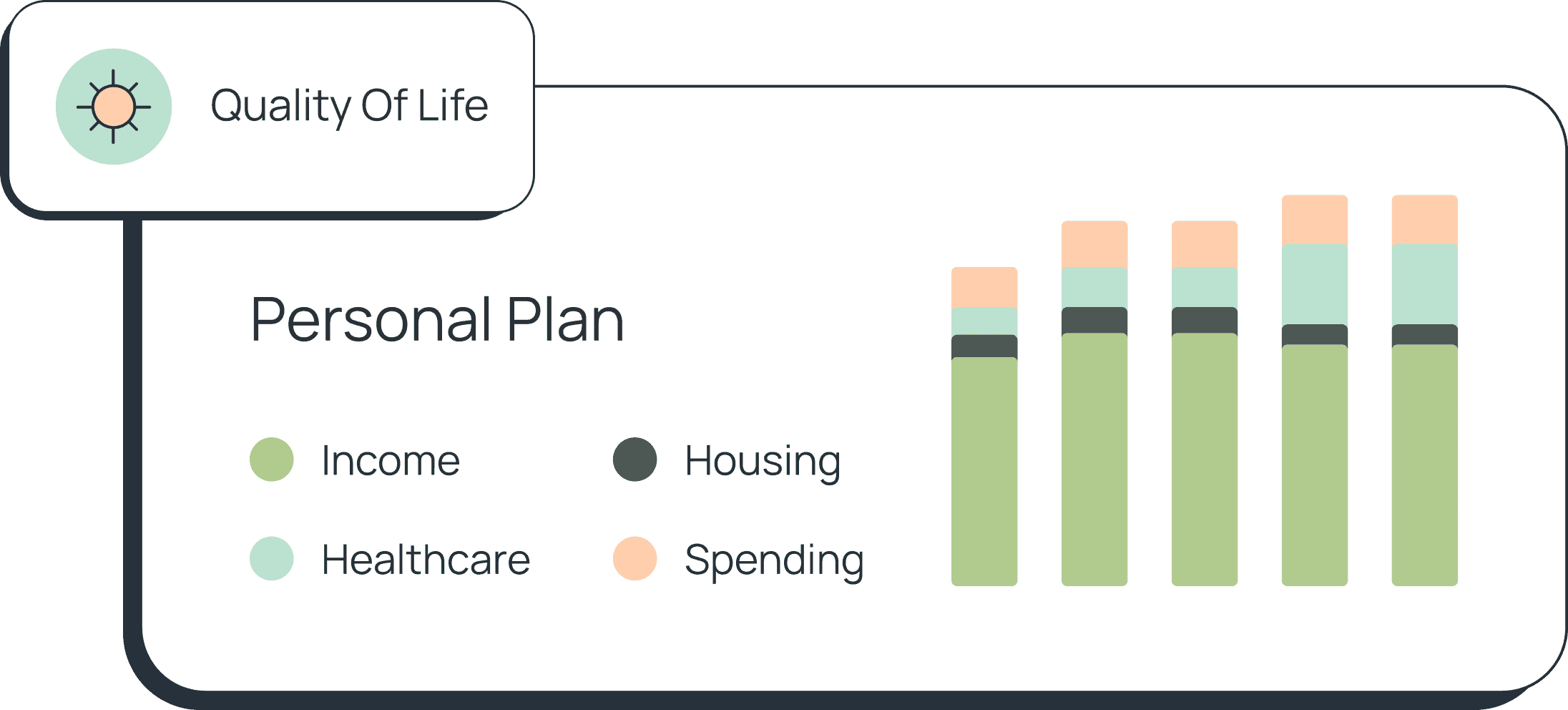Social Security
Read on to learn about the key differences between SSI (Supplemental Security Income) and SSDI (Social Security Disability Insurance), the main criteria for eligibility, and the ways you can apply for this federal aid.

C.E Larusso
•
Published August 10th, 2022
Table of Contents
Key Takeaways
SSI (Supplemental Security Income) and SSDI (Social Security Disability Insurance) have distinct differences like eligibity criteria and how you apply for these benefits.
SSI is a need-based program, and is not dependent on your work history like SSDI.
SSI beneficiaries typically qualify for Medicaid, depending on what state you live in. SSDI beneficiaries can receive Medicare after two years of SSDI payments.
Government programs can be difficult to understand, and the disability assistance initiatives are no exception. Read on to learn about the key differences between SSI (Supplemental Security Income) and SSDI (Social Security Disability Insurance), the main criteria for eligibility, and the ways you can apply for this federal aid.
What Is SSI?
SSI is Supplemental Security Income and it is managed by the government, offering financial assistance to those who are blind, disabled, or age 65 or older, and have limited income, assets, and resources. The money is meant to be used for basic needs, such as food, housing, and clothing.
The maximum monthly SSI payment for 2022 is the same nationwide: $841 for one person and $1,261 for a couple. You might be able to file for additional funds if your state has its own SSI program, distinct from the federal one. You might also receive less funding if you or your family has extra income.
SSI is distinct from Social Security retirement benefits. It is a need-based program, and does not require you to pay into a fund to qualify.
Qualifying for SSI
To qualify for supplemental security income, you must first meet the age, disability, or vision requirements. Here are the basic qualifications:
- You are 65 years of age or older;
- AND/OR you are legally blind;
- AND/OR you are disabled;
- And you are a U.S. citizen;
- And you have limited income, assets, and resources.
Your countable assets must be less than $2,000 if you are single and less than $3,000 if you are married or in a domestic partnership.
Countable income is defined as all earned, unearned, and deemed income. It can include:
- Wages, including self-employment earnings
- Social security benefits
- State disability payments
- Unemployment benefits
There are many things that the government does not call countable income. The first $20 of income you receive does not get added, whether it is earned or unearned. The first $65 of earned income—whether from regular wages or self-employment—does not get added either. Other kinds of payments that you should not include when calculating your countable income are:
- Food stamps
- Medical care
- Tax refunds
- State or city-based assistance
- Money others use to help with your basic expenses (such as utilities or medical bills—anything except food and shelter)
- Grants or scholarships used for educational expenses
- Disaster assistance
Your home, car, and household items are also exempt from your income calculation.
Here are two example scenarios:
Jenny lives alone. She earns $60 every month helping a neighbor with house cleaning. She also receives $100 in food stamps, and her sister pays her electric bill ($50). Social security would not count Jenny’s wages from cleaning, as it is less than $65 is earned income. The food stamps do not get calculated, nor would the money her sister spends paying her electric bill. Her countable income is $0, and as a single person, she would receive the full benefit amount of $841 per month, if she is approved.
Alternatively, if Jenny earned $300 for cleaning three neighbors’ homes each month, the government would subtract the initial $20 (unearned or earned income), then $65 (earned income), then divide that by two to get the countable income amount of $107.50. $107.50 (her earned income) would then be subtracted from the full benefit amount, so she would receive $733.50.
What Is SSDI?
SSDI stands for Social Security Disability Insurance. This government program provides income to those who are unable to work for a year or longer due to impairment, illness, or injury. Benefits are calculated based on the worker’s past earnings and amount paid to Social Security, and you are only eligible if you have worked for a certain amount of time and paid into the Social Security system.
Qualifying for SSDI
The criteria for SSDI is strict and differs from other programs. Social Security Disability Insurance pays only for total disability. No benefits are payable for partial disability or for short-term disability. SSA.gov considers you to have a qualifying disability under Social Security rules if all of the following are true:
- You cannot do work and engage in substantial gainful activity (SGA) because of your medical condition.
- You cannot do work you did previously or adjust to other work because of your medical condition.
- Your condition has lasted or is expected to last for at least one year or to result in death.
- Follow the step-by-step process involving five questions to determine if you have a qualifying disability.
Your application will be reviewed by two parties: first, the Social Security Administration; if they determine you have met the basic requirements, your application will get sent to your state’s Disability Determination Services (DDS) office. DDS will then investigate whether there is enough medical evidence to support your claim.
How much you receive from SSDI is determined by several factors: your age, how long you have worked, and your average earnings during your working years. The average amount received is about $1,100.
The Major Differences Between SSDI and SSI
The key differences to note between SSDI and SSI are:
- SSI is a need-based program, and is not dependent on your work history like SSDI.
- SSI maxes out at $841 for one person, based on need; SSDI maxes out at $3,345, but is based on how much income you were making prior to your disability.
- SSI beneficiaries typically qualify for Medicaid, depending on what state you live in. SSDI beneficiaries can receive Medicare after two years of SSDI payments.
How to Apply for SSI and SSDI
There are a few ways to submit an application for either SSI or SSDI.
- Apply online on the Social Security website.
- Call 1-800-772-1213 (or TTY 1-800-325-0778 if you are deaf or hard of hearing) to make a telephone or in-person appointment to apply.
- Call your local Social Security office to make an in-person or telephone appointment to apply.
You should apply as soon as you know you need assistance; the process can take some time. In addition, note that Social Security will pay for any medical tests they require to prove your disability, and if you need assistance through the process, you are allowed to assign a representative to help you.
If you are denied, you have the right to receive a copy of your case file, and can file an appeal.
Share this advice

A professional content writer, C.E. Larusso has written about all things home, finance, family, and wellness for a variety of publications, including Angi, HomeLight, Noodle, and Mimi. She is based in Los Angeles.
Share this advice

A professional content writer, C.E. Larusso has written about all things home, finance, family, and wellness for a variety of publications, including Angi, HomeLight, Noodle, and Mimi. She is based in Los Angeles.
Free Retirement Consultation
Still have questions about how to properly plan for retirement? Speak with a licensed fiduciary for free.



